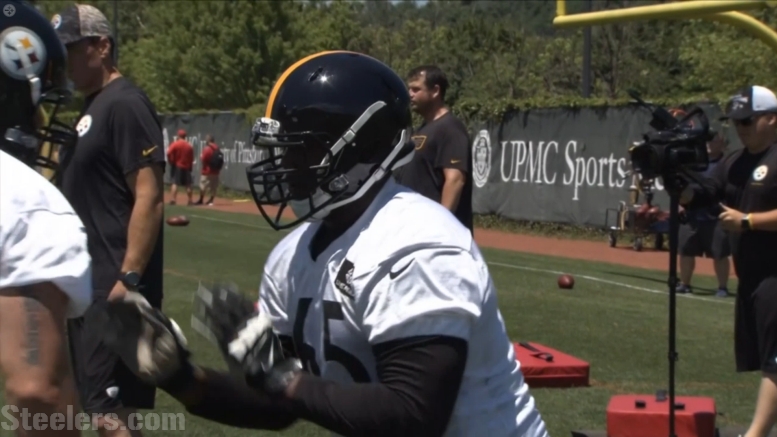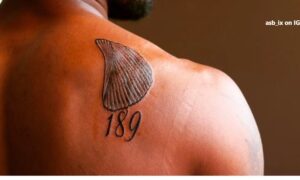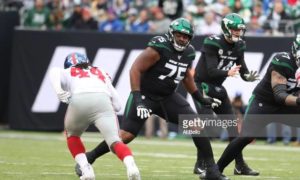It’s said a draft class can’t be fully graded until at least three years after the picks are made. That’s why after submitting grades for every Pittsburgh Steelers pick made in 2021, I began going back through and grading previous Steeler draft classes beginning with 2018. Today continues the third class in that exercise, with the Steelers’ fourth-round pick in the 2016 NFL Draft: Jerald Hawkins, an offensive tackle from LSU.
This exercise follows the six viewpoints (listed below) for examining and re-grading a pick. Each of the first five viewpoints gets examined and assigned a letter grade, before taking that analysis and combining it into a final letter grade. Those five viewpoints comprise much of what goes into the draft grades consumed by so many every year after the draft.
Steelers’ Career: What did the player contribute to the team that drafted him?
NFL Career: Did the player make the pick look better in hindsight after leaving Pittsburgh?
Pick Value: Did the player outperform his draft slot? Did he fail to live up to the pick used on him?
Positional Value: Was the player the best player remaining at his specific position in the draft?
Other Options: Did any players go during the next round that were better selections?
Overall Grade: A final mark to denote whether the selection was an overall positive one, or one better spent elsewhere.
Each factor in a retrospective doesn’t apply evenly to every pick made; consider the grades weighted. For example, to return a high grade in pick value, a first-round pick should have a long and impactful career, while a later-round pick needs only a couple seasons as a back-up or modest contributor to be worth the selection used on him.
Some factors are universal, though. Whether picked first overall or 259th, there will always be other options on the board to compare the player to, and steals and reaches can come from any place in the draft.
Round 4, Pick 25: Jerald Hawkins, OT, LSU
STEELERS CAREER: D
Hawkins’ career with the Steelers is one of the team’s most recent examples of imagining what could have been, without the affect of injuries early on and how they disrupted his best chance to learn and develop. A high-value pick in the back end of the fourth round, Hawkins offered exciting upside at a crucial position. He just never stayed healthy enough to capitalize on it.
A projected top backup to Alejandro Villanueva (then in his second season with the Steelers) at left tackle as a rookie, Hawkins never made it to Week 1. He suffered the first season-ending injury of his career, to his shoulder, and spent the entire season on injured reserve. Even that was a far longer season for Hawkins than his 2018, which ended in OTAs with a torn quadricep and another year spent on IR.
Between those two injuries, Hawkins finally got his chance to be a backup for the Steelers in 2017. Injuries played a part in his career sputtering, but so did poor performance. Hawkins played only 48 snaps on offense that season, and couldn’t beat out Chris Hubbard to fill in at right tackle during an injury to Marcus Gilbert.
Returning from his second season-ending injury, Hawkins did not earn a main role during camp, and Pittsburgh flipped him (with a 2021 seventh-round pick) to Tampa Bay for a sixth-round pick in the 2021 NFL Draft (which Pittsburgh used to select Miami edge rusher Quincy Roche, coincidentally like Hawkins a player viewed as a high-value pick taken later than expected).
After a brief year spent elsewhere, Hawkins returned to Pittsburgh last season when the Steelers signed him off of Houston’s practice squad. Brought in as depth after Zach Banner’s season-ending injury, Hawkins played a career-high 76 snaps across 13 games for Pittsburgh. The Steelers did not re-sign him, and he remains a free agent.
NFL CAREER: F
Suiting up for two teams in his time between stints in Pittsburgh, Hawkins played a grand total of three NFL snaps. After arriving in Tampa Bay in 2019, Hawkins made that three-snap appearance for the Buccaneers in their Week 15 game against Detroit. Tampa Bay didn’t re-sign him, and Hawkins signed with the Houston Texans as a free agent a month before the season began. Failing to win a roster spot, Hawkins joined the Texans’ practice squad. Pittsburgh poached him 11 days later.
PICK VALUE: D-
At the time of his selection, this was a section that many gave positive grades to. But through injuries and uninspiring performance, Hawkins failed to live up to the late fourth-round pick used to draft him. Playing 124 snaps and suffering two season-ending injuries across four seasons is minimal return on any draft pick, and leaves the Steelers wondering if he could have lived up to projections or at least contributed something as a consistent backup without losing two of his first three years.
POSITIONAL VALUE: C-
Helping Hawkins here is that so few of the tackles drafted after him became contributors of some kind in the NFL, and of the few who did, many had to switch positions to do it. One player stands out for doing both, though, as well as a truly awesome name: Halapoulivaati Vaitai, taken 164th by Philadelphia. Vaitai started 10 games his second season with the Eagles at tackle, later shifting inside to guard during his time with the team. His play there earned him a five-year, $45 million contract from Detroit to start at guard. Alex Lewis (130th, Baltimore) and Caleb Benenoch (148th, Tampa Bay) are others taken after Hawkins who switched and started at least one season at guard.
Working against Hawkins as tackles drafted later that started at the position in the NFL are Brandon Shell (158th, New York Jets) and Joe Haeg (155th, Indianapolis). Shell is the biggest success story, starting double-digit games for the Jets and Seattle Seahawks each of the last four seasons. Haeg started his first two seasons with Indy before falling out of the lineup, and now leads the competition to be Pittsburgh’s swing tackle this season.
OTHER OPTIONS: F
Nothing can add insult to (literal) injury for a failed draft pick on Day 3 quite like a superstar quarterback getting selected shortly after you. That is the case for Hawkins, who went 12 picks before the Dallas Cowboys drafted Dak Prescott, now the second-highest-paid QB in the league. Dak is far and away the player most teams would re-draft if given the chance throughout the fourth round, but other players went that offered better alternatives to Hawkins.
Blake Martinez went 131st to Green Bay and has become one of the league’s top tacklers, with four consecutive seasons of 144 or more tackles for the Packers and New York Giants. Connor McGovern is a three-year starter at guard and center for the Jets and Denver Broncos, going 144th to Denver. Matthew Judon went 146th to the Baltimore Ravens and had two consecutive Pro Bowl seasons before signing with New England for $54.5 million this offseason. And Jordan Howard, taken 150th by Chicago, began his career with two 1000-yard seasons as the team’s running back.
Beyond Dak and those other starters, numerous other players stuck as backups and depth options that saw the field throughout multiple seasons. All would have offered more to Pittsburgh than what it got out of Hawkins.
OVERALL GRADE: D
Everything shouldn’t be lumped onto the Steelers or Hawkins for this pick failing to work out. Pittsburgh did what any smart team would do: Draft a player on Day 3 who was considered an earlier pick and happened to slide in the draft. Specifically, a player who played left tackle, one of the most important positions in the game, and one where a team always has to have good depth. And Hawkins can’t help that misfortune just double-slapped him with two season-ending injuries in his first three years, each before he could get to the regular season.
But Hawkins had his chance in 2017 to see the field, and couldn’t beat out Hubbard at the time. He got more opportunities in 2019 with Tampa and 2020 back with Pittsburgh, and still didn’t earn his way onto the field. That doesn’t help his case, even if stunted development helped play a part. Whether by injury or a player’s own fault though, a fourth-rounder playing barely over 100 snaps in five seasons is not a good pick. With the upside and value Hawkins offered, it just leaves everyone wondering, “What If?”








